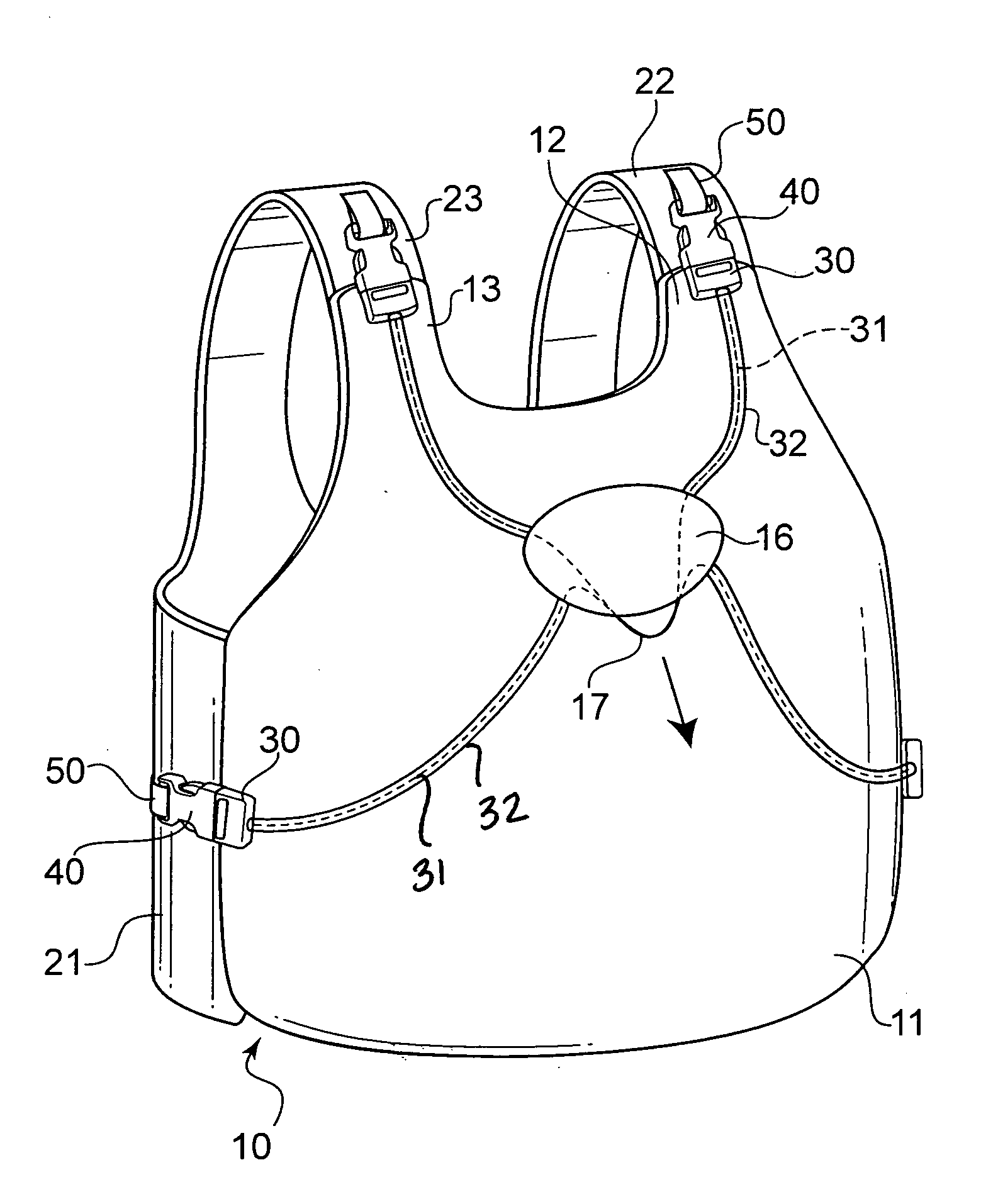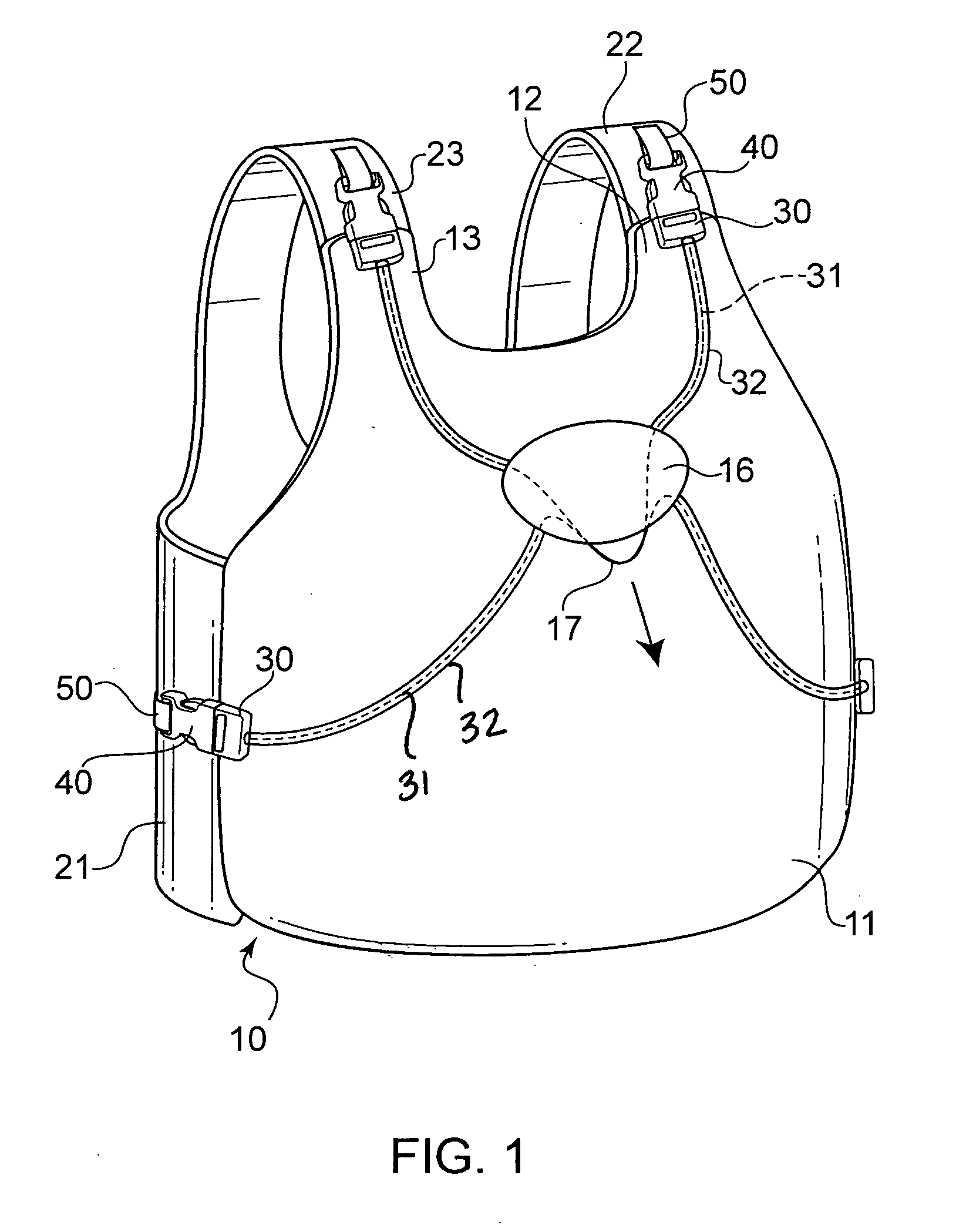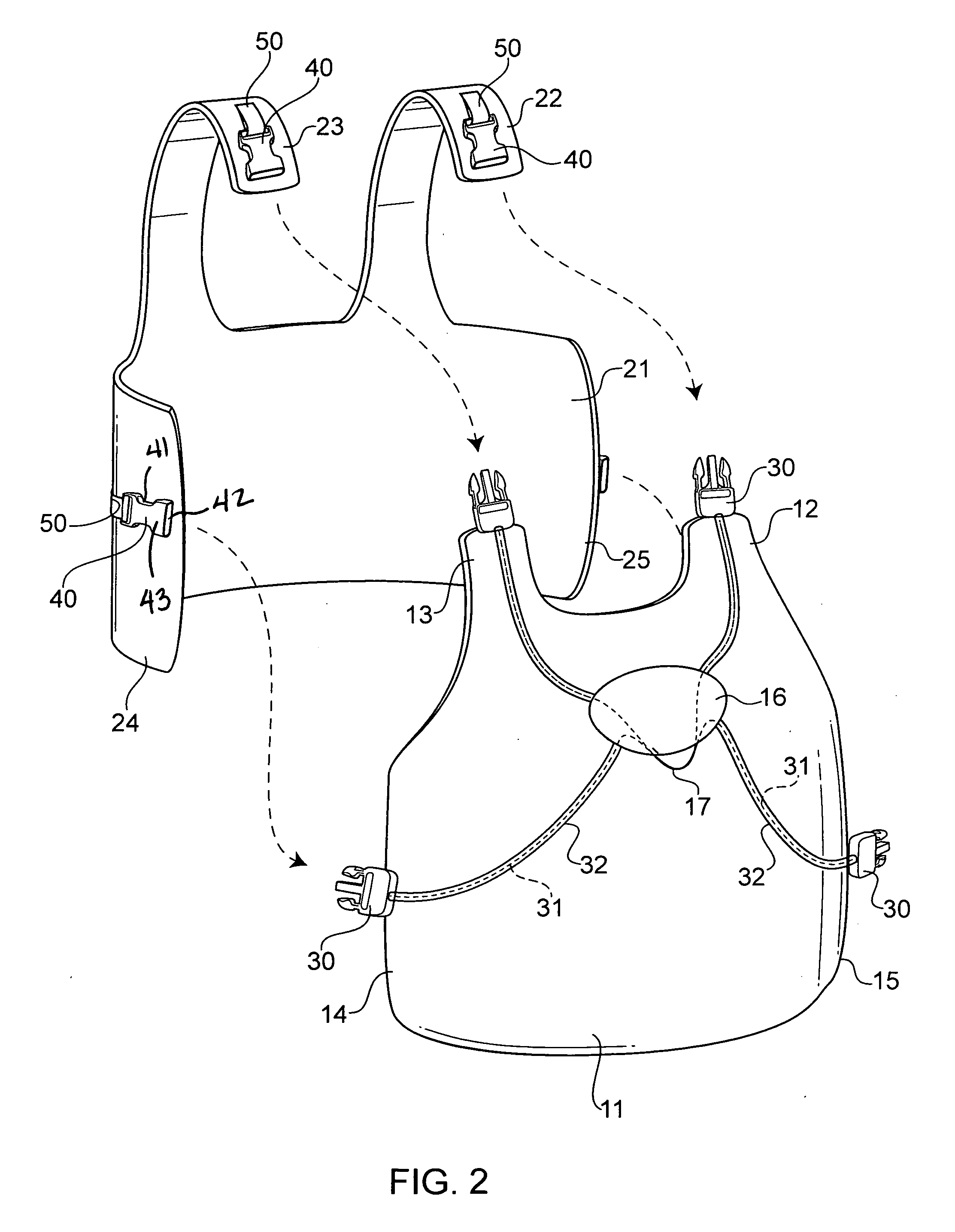Cut away vest
- Summary
- Abstract
- Description
- Claims
- Application Information
AI Technical Summary
Benefits of technology
Problems solved by technology
Method used
Image
Examples
Embodiment Construction
[0028]Referring now in detail to the drawings, FIGS. 1 and 2 show a vest 10 according to one embodiment of the invention. Vest 10 consists of a front vest piece 11 connected to a rear vest piece 21. Front vest piece 11 has two shoulder sections 12, 13 and two waist sections 14, 15. Rear vest piece has two shoulder sections 22, 23 and two waist sections 24, 25. Rear vest piece 21 is connected to front vest piece 11 via buckles located on each of shoulder sections 12, 13, 22, 23 and waist section 14, 15, 24, 25. Front vest piece 11 is equipped with male buckle portions 30 on each of sections 12, 13, 14, 15, and rear vest piece 21 is equipped with female buckle portions 40 attached to sections 22, 23, 24, 25. Male buckle portions 30 on front vest piece 11 are releasably connected to corresponding female buckle portions on rear vest piece 21 to connect the two vest pieces together.
[0029]Because vest pieces 11, 21 must be connected while vest 10 is being worn, it is ideal if rear waist s...
PUM
 Login to View More
Login to View More Abstract
Description
Claims
Application Information
 Login to View More
Login to View More - R&D
- Intellectual Property
- Life Sciences
- Materials
- Tech Scout
- Unparalleled Data Quality
- Higher Quality Content
- 60% Fewer Hallucinations
Browse by: Latest US Patents, China's latest patents, Technical Efficacy Thesaurus, Application Domain, Technology Topic, Popular Technical Reports.
© 2025 PatSnap. All rights reserved.Legal|Privacy policy|Modern Slavery Act Transparency Statement|Sitemap|About US| Contact US: help@patsnap.com



